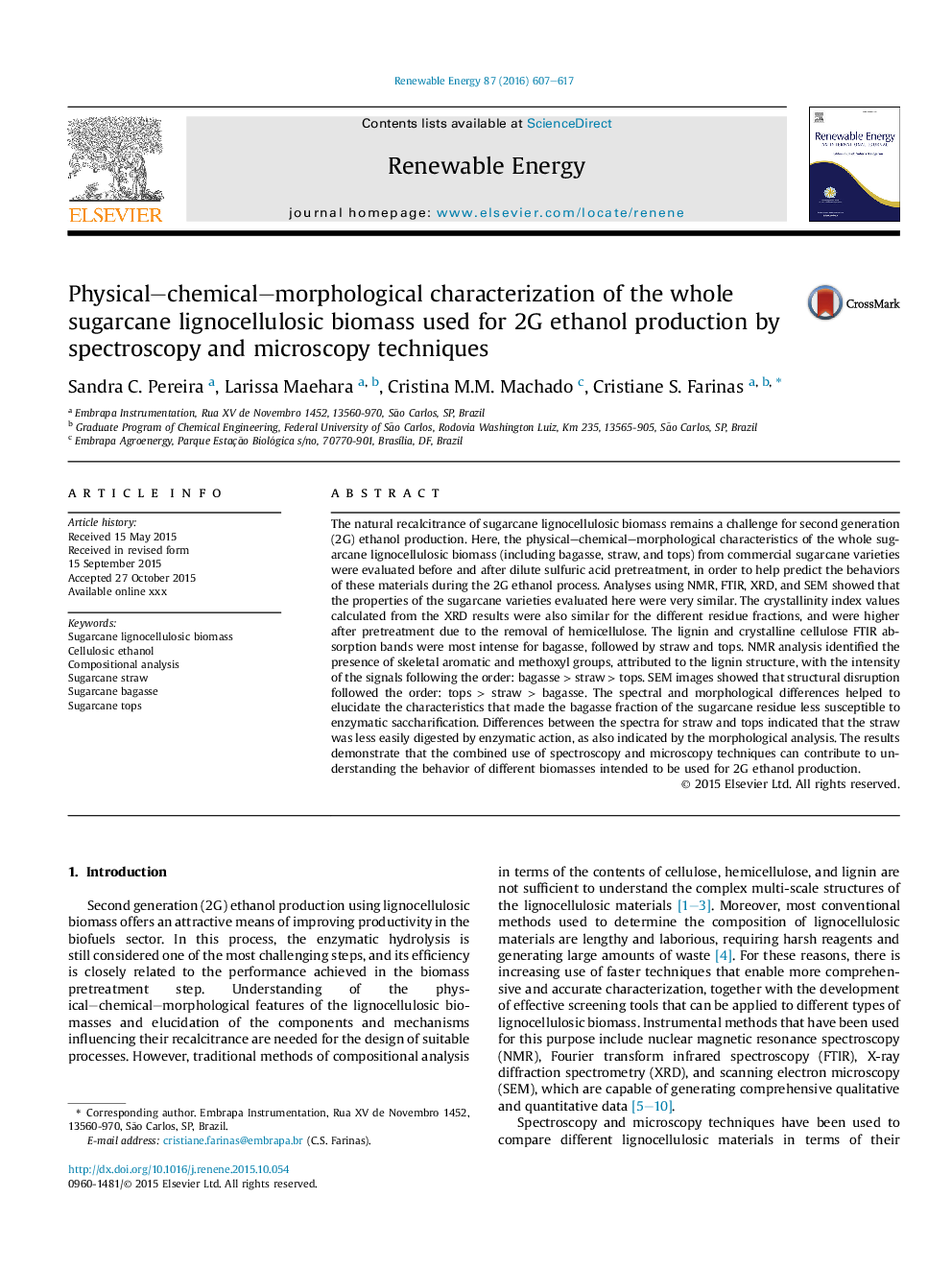| کد مقاله | کد نشریه | سال انتشار | مقاله انگلیسی | نسخه تمام متن |
|---|---|---|---|---|
| 10294002 | 512447 | 2016 | 11 صفحه PDF | دانلود رایگان |
عنوان انگلیسی مقاله ISI
Physical-chemical-morphological characterization of the whole sugarcane lignocellulosic biomass used for 2G ethanol production by spectroscopy and microscopy techniques
دانلود مقاله + سفارش ترجمه
دانلود مقاله ISI انگلیسی
رایگان برای ایرانیان
کلمات کلیدی
موضوعات مرتبط
مهندسی و علوم پایه
مهندسی انرژی
انرژی های تجدید پذیر، توسعه پایدار و محیط زیست
پیش نمایش صفحه اول مقاله

چکیده انگلیسی
The natural recalcitrance of sugarcane lignocellulosic biomass remains a challenge for second generation (2G) ethanol production. Here, the physical-chemical-morphological characteristics of the whole sugarcane lignocellulosic biomass (including bagasse, straw, and tops) from commercial sugarcane varieties were evaluated before and after dilute sulfuric acid pretreatment, in order to help predict the behaviors of these materials during the 2G ethanol process. Analyses using NMR, FTIR, XRD, and SEM showed that the properties of the sugarcane varieties evaluated here were very similar. The crystallinity index values calculated from the XRD results were also similar for the different residue fractions, and were higher after pretreatment due to the removal of hemicellulose. The lignin and crystalline cellulose FTIR absorption bands were most intense for bagasse, followed by straw and tops. NMR analysis identified the presence of skeletal aromatic and methoxyl groups, attributed to the lignin structure, with the intensity of the signals following the order: bagasse > straw > tops. SEM images showed that structural disruption followed the order: tops > straw > bagasse. The spectral and morphological differences helped to elucidate the characteristics that made the bagasse fraction of the sugarcane residue less susceptible to enzymatic saccharification. Differences between the spectra for straw and tops indicated that the straw was less easily digested by enzymatic action, as also indicated by the morphological analysis. The results demonstrate that the combined use of spectroscopy and microscopy techniques can contribute to understanding the behavior of different biomasses intended to be used for 2G ethanol production.
ناشر
Database: Elsevier - ScienceDirect (ساینس دایرکت)
Journal: Renewable Energy - Volume 87, Part 1, March 2016, Pages 607-617
Journal: Renewable Energy - Volume 87, Part 1, March 2016, Pages 607-617
نویسندگان
Sandra C. Pereira, Larissa Maehara, Cristina M.M. Machado, Cristiane S. Farinas,